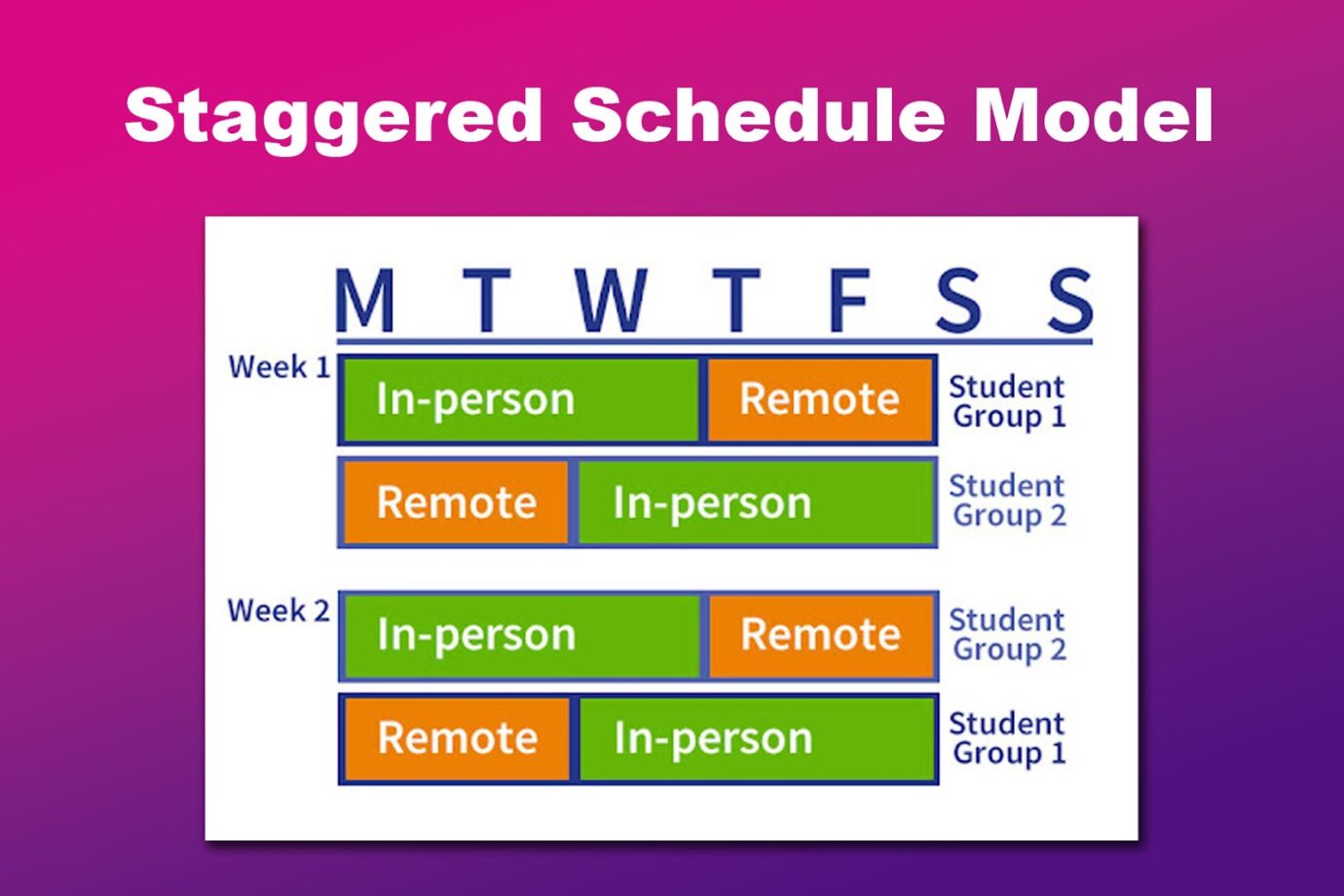Companies must consider factors like team dynamics, communication strategies, and individual preferences to implement the ideal hybrid work schedule. Employers can encourage creativity, collaboration, and work-life balance by finding the right mix of flexibility and structure in the work environment.

If you are experienced in working or transitioning to a hybrid work setup, this guide offers useful advice for adapting to flexible work arrangements.
Discover what hybrid-remote work is in this article.
What Is the Ideal Hybrid Work Schedule?
The best hybrid work schedule depends on your and your employer’s needs. Coordinate with your employers to find the right balance between working from home and collaborating in person, considering your job tasks, team interactions, and personal preferences.
Flexibility is a key component of successful hybrid work. This means having the option to work remotely for better productivity and happiness while still having opportunities for face-to-face teamwork and creativity.
Some companies might offer a hybrid schedule, where you work remotely for a few days in the office and the rest of the week. Others might take a more flexible approach and let you decide when to work in the office and from home based on your needs and duties.
According to this LinkedIn article, the Four-Day Hybrid schedule is considered one of the most advantageous hybrid work schedules. This is based on the results from a six-month trial involving thousands of employees in which the test resulted in increased happiness and productivity among workers.
Types of Hybrid Work Schedules
These are some of the common types of hybrid schedules include:
1. Rotating Schedule
A rotating schedule is based on a predetermined schedule, such as a weekly or bi-weekly rotation for on-site and remote workdays. Employees may alternate days in the office, working in the office every day of the week or only for certain weeks.
2. Staggered Schedule Model

Teams start and finish their workdays at different times or on distinct days. For instance, one team might work on-site Monday and Tuesday, then switch to remote work Wednesday through Friday, while another team follows the opposite schedule. This approach addresses the problem of office density.
3. Core Hours Model
In this model, you need to be in the office or available for online meetings during certain core hours. Your schedule during the remaining period is more flexible. This model combines some synchronous collaboration with individual workflow.
4. Remote-first Model
In this setup, workers can decide when to work from home and be in the office. Certain days could be set aside for office meetings or group projects, but the main work method is from home. This setup allows you to balance your work and personal lives.
5. Flexible Work Hours
This approach allows you to choose their work hours as long as you meet core business hours and any necessary meetings or collaborative sessions. This flexibility can accommodate individual preferences and personal obligations.
Not sure if you want to implement a hybrid work setup? Check out this comparison between hybrid and remote work.
Best Practices for a Hybrid Work Schedule
Implementing a successful hybrid work schedule requires careful planning and adopting best practices to ensure a productive and cohesive work environment.
Here are some best practices for managing a hybrid work schedule:
1. Communication Channels

Ensure that there are clear and transparent communication channels to inform employees what is expected from them, company policies, or any other modifications relating to the hybrid work schedule.
Update employees on business developments and new initiatives regularly to avoid miscommunication and establish procedures for remote work.
2. Reliable Technology Infrastructure and Tools
Invest in technology infrastructure and team collaboration tools as reliable means for remote work. This ensures the ease of communication and collaboration between team members. However, training is also essential so employees can effectively utilize various tools.
Check out these 11 Best Virtual Team Tools For Effective Collaboration!
3. Defined Core Hours
Implement defined core hours when all team members should be available for meetings, collaboration, and communication. This synchronizes the teams’ schedules across time zones and ensures that the teammates can quickly connect and collaborate regardless of location.
4. Regular Check-in and Team Meetings
Schedule a list of check-ins, regular team meetings, and social events. These will help your team members get along and minimize remote work issues.
Use video conferencing and virtual platforms to facilitate virtual team-building activities and promote a positive work environment.
5. Performance Measurement Based on Outcomes
Instead of focusing solely on the number of hours worked or physical presence in the office, emphasize measuring results. Establish clear performance metrics and evaluation criteria that align with the organization’s goals and objectives.
Read this article from LinkedIn to learn the most effective ways to create a hybrid work schedule.
Factors to Consider When Implementing the Ideal Hybrid Work Schedule
Here are some factors to consider when implementing the best hybrid work schedule for you:
- Duties and Responsibilities of the Job.
Some roles require teamwork and are best done in an office. Others may also need individual focus and may be more productive if done at home to avoid distractions. - Employee Preferences.
Every employee has a preference for working on-site or remotely. Some thrive in a collaborative office space, while others prefer the calmness of their homes. Considering these preferences can enhance job satisfaction and retention. - Technology.
Technology is a key component of remote working. If you shift towards a remote-first approach, ensure your employees have the tools and support to work effectively. - Performance Evaluation.
A well-defined and transparent objective is essential for successful performance evaluation. Whether you are working from home or in a physical workplace, you must be aware of the expectations set for you. - Diversity and Inclusion. As the employers, ensure that all employees are catered for by your hybrid work schedule, considering those with disabilities and caregiving responsibilities, among others with unique needs or circumstances.
Related Post: Comparing Hourly vs Salaried Position